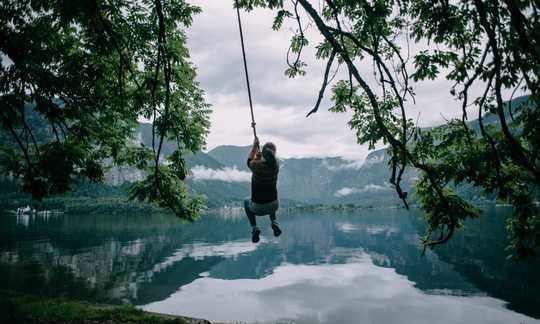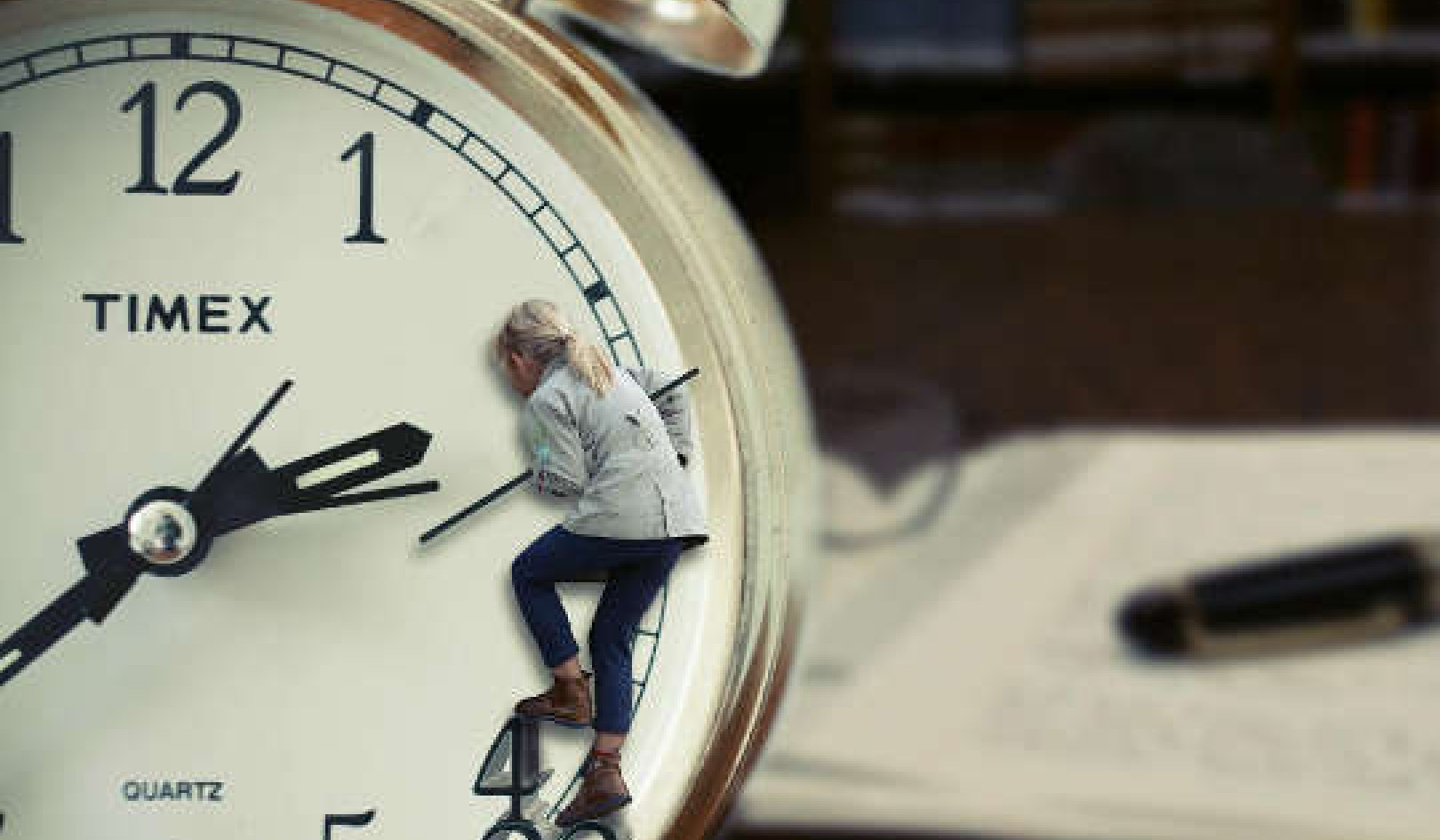
Science is showing how immersion in nature speeds healing and acts as an antidote for many ailments.
During one of the most trying times in my life, when my marriage was coming to an end, I would venture daily into the forested area near our home and take the family dog for a long walk. Walking through the meandering fire roads gave me the space to reflect on my current predicament and what lay ahead.
Having the dog as my companion was an added bonus.
During this difficult period, nature provided me with relief from the stress of a major life transition. The exercise, combined with the beautiful scenery and my dog’s company, was my daily dose of soothing comfort. Gazing at the ancient redwoods reminded me of the many winter storms and changes they’ve weathered during their lifetime. Seeing a red-tailed hawk soaring above helped me to think of the need for a “bird’s-eye view” for a broader perspective on my own circumstances. Witnessing the vegetation, ants, butterflies and squirrels mirrored to me that life is constantly evolving and adapting over time. Occasionally I would call a friend. Hearing their voice and support in the serenity of a natural setting also provided me with the strength to move forward through this challenging time.
Looking back several years later, I appreciate the healing power of my walks in nature. The wilderness gave me a place to reflect, discern, plan, and exhale from the stress of the personal changes taking place. Taking the time to stop and look closely at the insects, the flowers, rocks, and leaves rejuvenated my spirit and gave me renewed appreciation for how life is constantly unfolding around us. Even during the subsequent years as I adjusted to my new status, being in nature gave me a constant grounding that I cherish to this day. A friend who was also recently divorced mentioned that he made it a habit to buy himself flowers to bring beauty into his new surroundings.
I welcomed the weekly ritual, which I still maintain, of having fresh flowers as a way to celebrate nature.
Healing impacts of nature
Nature serves as a refuge to inspire, reflect and heal. Studies reveal that being in nature has a powerful positive effect on the mind, body, and spirit. The statistics on the health benefits for kids of being in nature are remarkable and in many ways not surprising. Outdoor activities increase physical fitness, raise levels of vitamin D and improve distance vision; being in nature reduces ADHD symptoms; schools with outdoor education programs help students score higher in standardized tests and improve their critical thinking skills. Nature also reduces stress levels and enhances social interactions among children.
These benefits also translate to adults. In adults, studies show that being in nature will speed the health recovery process, reduce blood pressure and lower the risk of cancer as well as lift people’s spirits. In a classic study performed in a suburban Pennsylvania hospital between 1972 and 1981, patients who had a window view of deciduous trees healed from surgery much faster than those who viewed a brick wall. The patients with a nature view also received fewer negative evaluations from their nurses and took fewer pain injections. High blood pressure, which affects one in three Americans, costs the U.S. over $48 billion a year. A recent study, however, shows that adults can reduce their blood pressure by simply spending 30 minutes or more a week walking in a park. In a study looking at the link between nature and cancer, people who took two long walks in nature over two consecutive days had an increase in their cancer-fighting cells, known as NK cells, of 50 percent and an increase in the activity of these cells by 56 percent. In addition, the activity levels of the cells remained high for a month. These studies highlight the numerous ways that simply getting outdoors will benefit us psychologically and physically.
Some of the most interesting research on the connection between health and nature is coming from Japan. Walking and spending time in forests, known as shinrin-yoku, or forest bathing, is a popular form of preventive health care in Japan. Studies are now proving the health benefits of spending time in forests. Yoshifumi Miyazaki from Chiba University, Japan, discovered that going for a 40-minute walk in a cedar forest lowers the level of cortisol, a stress hormone, as well as blood pressure and supports the immune system more than a similar 40-minute walk indoors in a lab. Qing Li from Nippon Medical School in Tokyo has shown that trees and plants emit compounds known as phytoncides that when inhaled give us therapeutic benefits akin to aromatherapy. Phytoncides also change the blood composition, which impacts our protection against cancer, boosts our immune system and lowers our blood pressure.
Experiencing nature not only reduces stress but also improves our cognitive ability. Gregory Bratman from Stanford University and his colleagues enlisted 60 participants who were randomly divided into two groups: The first group took a 50-minute “nature” walk surrounded by trees and vegetation, and the second group took an “urban” walk along a high-traffic roadway. The nature walkers showed cognitive benefits including an increase in working memory performance, “decreased anxiety, rumination, and negative affect, and preservation of positive affect.”
In a subsequent study, Bratman investigated the neurological mechanisms affected by being in nature by measuring the part of the brain (subgenual prefrontal cortex) that is activated by brooding. Our tendency to brood, referred to by cognitive scientists as “morbid rumination,” often makes us focus on the negative aspects of our lives and can lead to anxiety and depression. Bratman and his colleagues found that the participants who walked in the quieter, wooded portion of the campus had lower activity in the brooding portion of their brains than those who walked near the busy roadway.
The psychological benefits of being in nature are also affected by the biodiversity of the natural environment. As cities design urban green spaces, incorporating diverse vegetation and wildlife improves urban dwellers’ health and well-being. A study in Sheffield, UK, surveyed the effects of different habitat types such as amenity planting, mown grassland, unmown grassland, scrub and woodland and monitored the butterfly and bird species in these areas. Participants showed an increase in psychological well-being in habitats with greater species diversity. As researcher Richard Fuller and his colleagues point out, “The degree of psychological benefit was positively related to species richness of plants and to a lesser extent of birds, both taxa where perceived richness corresponded with sampled richness.” Additionally, “Our results indicate that simply providing green space overlooks the fact that green spaces can vary dramatically in their contribution to human health and biodiversity provision. Consideration of the quality of that space can ensure that it serves the multiple purposes of enhancing biodiversity, providing ecosystem services (Arnold & Gibbons 1996), creating opportunities for contact with nature (Miller 2005) and enhancing psychological well-being.” Fuller’s study suggests that the biodiversity in a habitat affects our well-being—the more species diversity, the greater the positive impact on our health.
As the scientific evidence mounts that immersing ourselves in nature increases our health and well-being, the question that arises is, why? The two most common theories that explain this phenomenon are the psychoevolutionary theory and the attention restoration theory. Psychoevolutionary theory focuses on the human ability to have “positive built-in reactions to natural environments.” In essence, our positive connection to nature including low stress and high spirits has evolved innately as part of our species development over millennia. This theory accounts for nature’s capacity for improving our well-being but doesn’t delve into the cognitive impact of nature on our brain. For this aspect, we turn to attention restoration theory.
Attention restoration theory looks at the two main types of attention that humans employ: directed and undirected attention. Directed attention requires us to focus on a specific task and block any distractions that may interfere with it. For instance, when we are working on a math problem, or engrossed in reading a literary passage or in assembling or repairing an intricate mechanical object, our brains are totally dedicated to the task at hand, requiring our direct undivided attention. After we complete the task we often feel mentally fatigued or drained. Conversely, when we are outdoors, we may enjoy observing patterns or a sunset, clouds, flowers, leaves or a beautiful meadow, which call on our undirected attention. Using our senses to touch, see or smell in natural settings doesn’t require a task-specific, problem-solving approach. Instead we can enjoy our experience in nature and be rejuvenated by taking in the sights and sounds at a relaxed pace. Undirected attention is easy to summon and maintain and leads to reduced stress and anxiety.
What about experiencing nature’s healing powers through technology? Is it as effective as being out in the real deal? Studies show that when workers are given the choice of a windowless working station or a plasma TV display of natural scenes, they prefer the plasma option. This option improved their well-being and cognitive abilities. However, another study found that participants who had a view of nature through a window had a greater sense of well-being than those who simply had a blank wall; having a plasma TV “window” was no more restorative than a wall. So, as might be expected, views of nature are the most beneficial for our mental health, followed by photos or videos of natural scenes. Medical professionals are catching on to the benefits of nature and incorporating in medical facilities architectural designs that include views of nature, images of natural scenery, natural lighting and healing gardens.
Nature as a vital supplement
Richard Louv, author of Last Child in the Woods and The Nature Principle, started a national discussion about the importance of nature in children’s and adults’ lives. He coined the term “nature deficit disorder” to highlight the negative impacts on children of spending less time outdoors and more time indoors, typically absorbed in their TV, computer, tablet or phone. Louv also speaks about the importance of the mind/body/nature connection, which he calls vitamin N (for nature). As he points out:
“Today the long-held belief that nature has a direct positive impact on human health is making a transition from theory to evidence and from evidence to action. Certain findings have become so convincing that some mainstream health providers and organizations have begun to promote nature therapy for an array of illnesses and for disease prevention. And many of us, without having a name for it, are using the nature tonic. We are, in essence, self-medicating with an inexpensive and unusually convenient drug substitute. Let’s call it vitamin N—for Nature.”
Using the nature tonic, or vitamin N, as an antidote for many of the ailments associated with modern industrial life reveals the importance of integrating nature into our daily lives. Since most of the world’s population now lives in urban centers, parks and green spaces are becoming increasingly vital for our health and well-being. Even a 30-minute walk in a tree-lined area has proven physical and psychological benefits.
Louv helped to spark a national movement to get children outside in nature. To reverse the trend of children spending up to seven hours daily in front of screens, scores of organizations including the National Wildlife Federation and the David Suzuki Foundation are implementing innovative programs and resources for parents and schools. The National Wildlife Federation has set a goal to get 10 million kids outdoors by giving parents resources to spend time with them outside and by working with schools and youth organizations to develop programs promoting unstructured time in nature. The David Suzuki 30x30 Nature Challenge encourages children and adults to spend 30 minutes a day outdoors for 30 days to kick-start a new trend, stating, “It is essential that we reframe our traditional view of nature as a place for leisure and sport towards one that emphasizes a full range of physical, mental, and social health benefits.”
In Scandinavian countries, the value of spending time outdoors is encapsulated in the word friluftsliv, which translates to “open air life.” In Norway, Sweden, and Finland friluftsliv supports a connection with nature that is incorporated as part of their cultural heritage. It means, for instance, kids playing outdoors and exploring the insects under rocks and logs or a bird’s nest. In Finland, teachers have competitive salaries, independence in their curriculum design, shorter school hours and plenty of time for their students to play outdoors. The success of their system, which blends work and outdoor play, has students repeatedly ranking near the top in academic achievement scores on a global scale. Playing outside is not merely an opportunity to rest and decompress but instead an important part of the learning process. As author Erik Shonstrom points out, “The central tenet of friluftsliv is the importance of entering into nature in an uncomplicated way. No Matterhorn ascent required—we’re simply talking about kids playing in the woods, parks, and fields.”
This article originally appeared on YES! Magazine
About The Author
Andrés R. Edwards is founder and president of EduTracks, a firm specializing in developing education programs and consulting services on sustainable practices for green building and business initiatives. He is the author of The Heart of Sustainability: Restoring Ecological Balance from the Inside Out, Thriving Beyond Sustainability: Pathways to a Resilient Society, and The Sustainability Revolution: Portrait of a Paradigm Shift.
Excerpted from Renewal: How Nature Awakens Our Creativity, Compassion, and Joy by Andrés Edwards (New Society, April 2019) reprinted by permission of the publisher, newsociety.com
Related Books
at InnerSelf Market and Amazon























